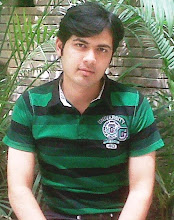 It's budget season in India, with the federal government due to unveil its annual spending plan Friday. Look to defense to figure prominently: It's expected to clock in at $31 billion and arms spending could hit $100 billion over the next decade. But just as important as how much the government spends is the question of what the government spends the money on. That is where the really interesting changes are likely to show up.
It's budget season in India, with the federal government due to unveil its annual spending plan Friday. Look to defense to figure prominently: It's expected to clock in at $31 billion and arms spending could hit $100 billion over the next decade. But just as important as how much the government spends is the question of what the government spends the money on. That is where the really interesting changes are likely to show up. Internal security is set to become a greater priority relative to foreign defense. India last week hosted its sixth "Defexpo," one of the largest exhibitions of defense equipment in Asia. On the same day 650 exhibitors from 33 countries were displaying their wares in New Delhi, the country's largest insurgent group, the Communist Party of India (Maoist), raided a West Bengal police camp in broad daylight, killing 24 troopers. The day after the expo ended, Maoists struck again in a Bihar village, killing 11. Clearly India's problems are not confined to China and Pakistan.
Internal security is set to become a greater priority relative to foreign defense. India last week hosted its sixth "Defexpo," one of the largest exhibitions of defense equipment in Asia. On the same day 650 exhibitors from 33 countries were displaying their wares in New Delhi, the country's largest insurgent group, the Communist Party of India (Maoist), raided a West Bengal police camp in broad daylight, killing 24 troopers. The day after the expo ended, Maoists struck again in a Bihar village, killing 11. Clearly India's problems are not confined to China and Pakistan.That attack encapsulated one of the main internal threats facing India. Prime Minister Manmohan Singh has repeatedly warned of the danger posed by left-wing extremists pledged to overthrowing the democratic government. This insurgency originated in 1967 in West Bengal and was quelled within a decade, only to reappear later and in a more widespread form. Today Maoists have a presence in 20 of the 28 states, and control large tracts of tribal forest land in eight of those states. They have a centralized military and political structure, are adequately funded through extortion, donations and theft, and in most cases are better armed and trained than local police forces.
Another internal threat comes from overseas terrorist groups active within India. Some of these are Islamist groups emanating from Pakistan; others are among a dozen ethnic insurgencies in the northeast fanned by China at various times. This was illustrated most recently by the November 26, 2008, Mumbai hotel attacks, carried out by Lashkar-e-Taiba, a group based mainly in Pakistan. But that's not the only one—there are others, mainly breakaway Lashkar groups like the Hizb ul Jamaat e Islami and Jaish e Mohammad.
The key defense line to watch for in the budget will be whether Delhi makes a concerted effort to improve this situation by beefing up its resources. The need was illustrated in the Mumbai attack, when even a police chief's bulletproof vest was found to be defective. Police units armed with World War Two-era weapons are facing increasingly sophisticated terrorist groups. No definite figures are available, but it is estimated that the internal-security budget is only one-quarter of what the country spends on defense.
At the Defexpo, foreign vendors appeared to have sensed India's shifting priorities, looking beyond tanks, guns and air defense systems for conventional defense to state-of-the-art counterinsurgency and counterterrorism equipment. At least two sold surveillance equipment to two state governments even before the exhibition was over. The question is whether the government will buy more, or enough of, this material.
And that will be only part of the challenge. Home Minister Palaniappan Chidambaram, brought into the government after the Mumbai attack, has announced that the government will unveil by the end of this year a national counterterrorism agency modeled on the U.S. Department of Homeland Security. That's a start, but Delhi needs to do more. At present it appears this agency will focus mainly on the threat of Islamist terror, leaving the Maoist insurgency threat untended.
If there's one reason for optimism, it's that India has risen to this type of challenge before. The 1962 border war with China highlighted the weakness of India's defense capabilities and led to a massive overhaul, helped by the United States. A border conflict with Pakistan in 1999 exposed intelligence and equipment deficiencies. A group of ministers was formed to rectify these shortcomings and made progress fixing them, though some of those recommendations are still to be implemented. Now that internal security is firmly front and center in policy makers' attention, they may act. It won't be easy—funds will either have to be diverted from external security or from non-defense uses. But it can be done.
In the aftermath of the Mumbai attacks, TV cameras surrounded those who were rescued from the Trident and Taj hotels 72 hours after terrorists captured the hotels. As she emerged from the battlezone, a bedraggled foreign tourist remarked: "Half a dozen terrorists—and it took you this long (to overcome them)?" This week's budget will be a sign of how well that question has sunk in.
Source:WSJ(Ashok Mehta)



0 comments on "India Ka Asli Dhushman Kaun?"
Subscribe in a Reader
Post a Comment